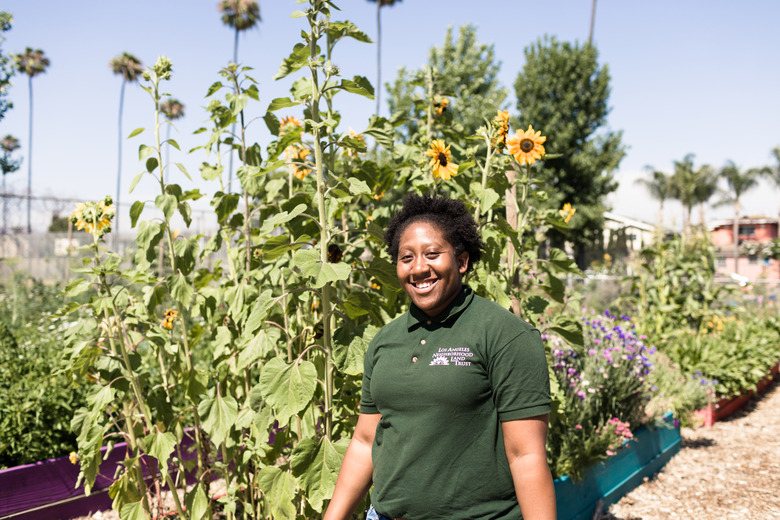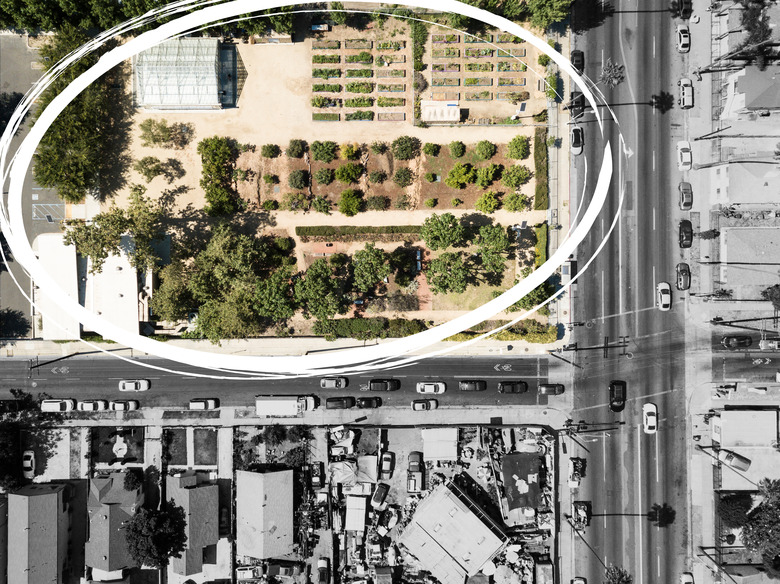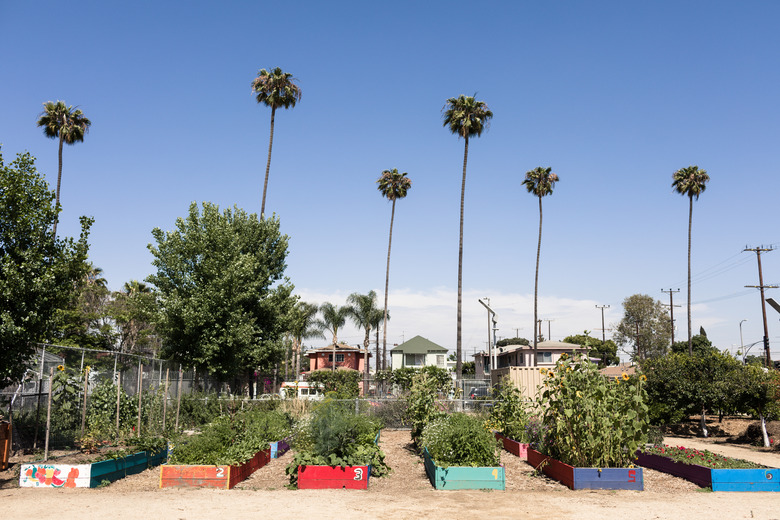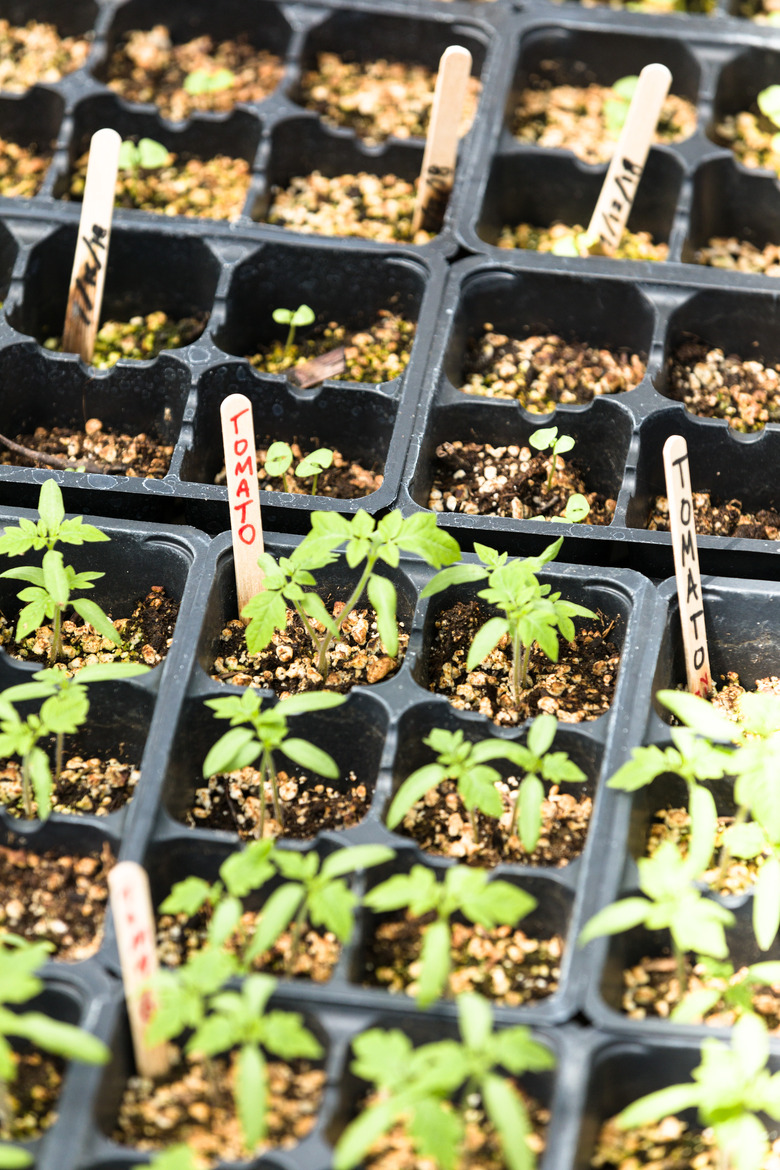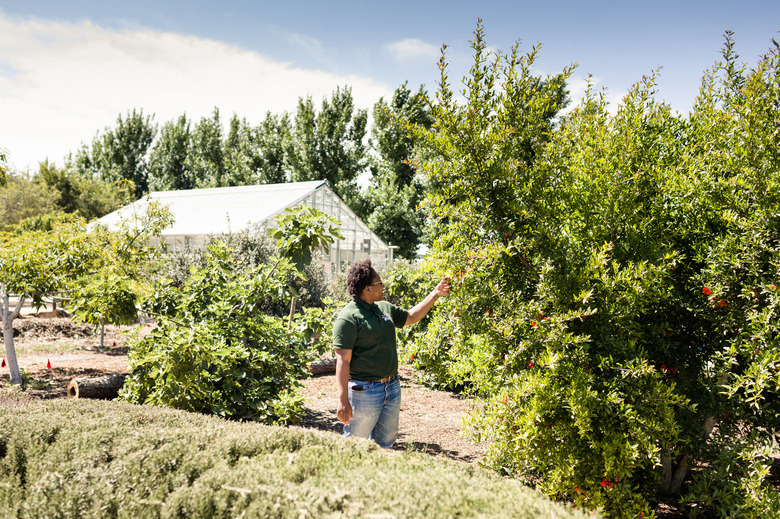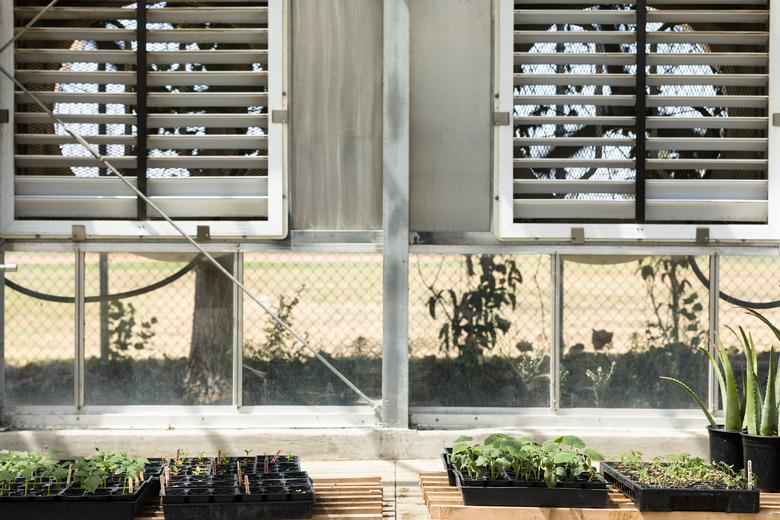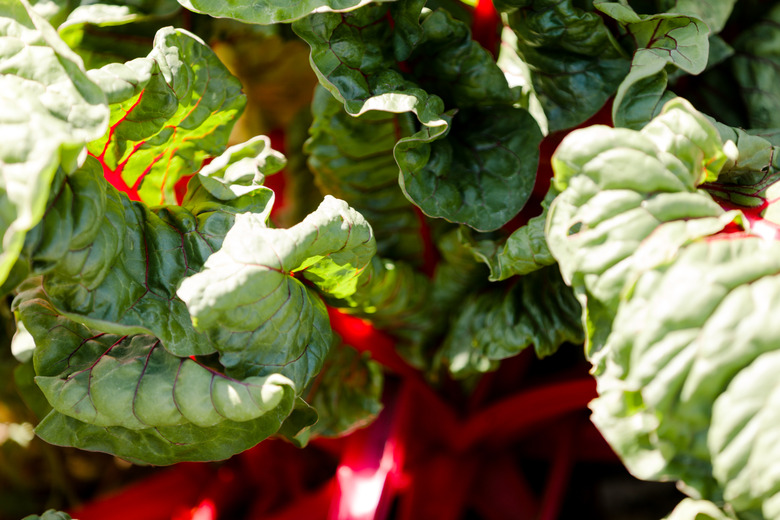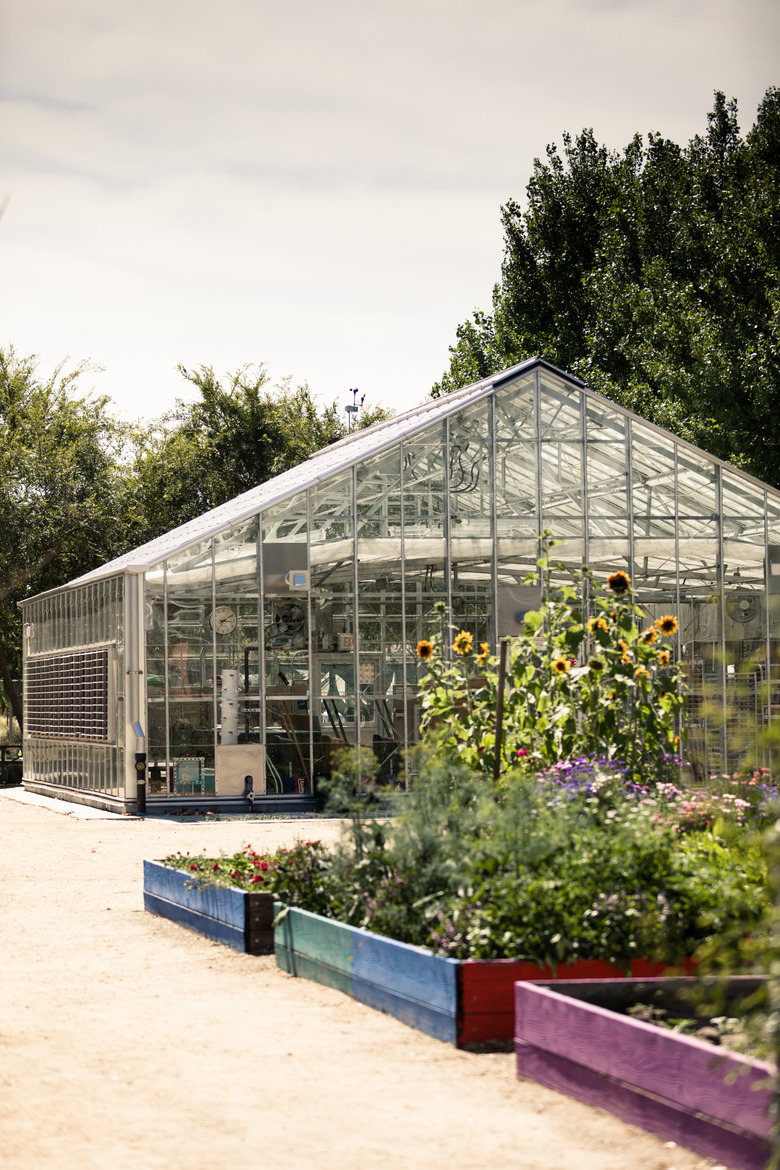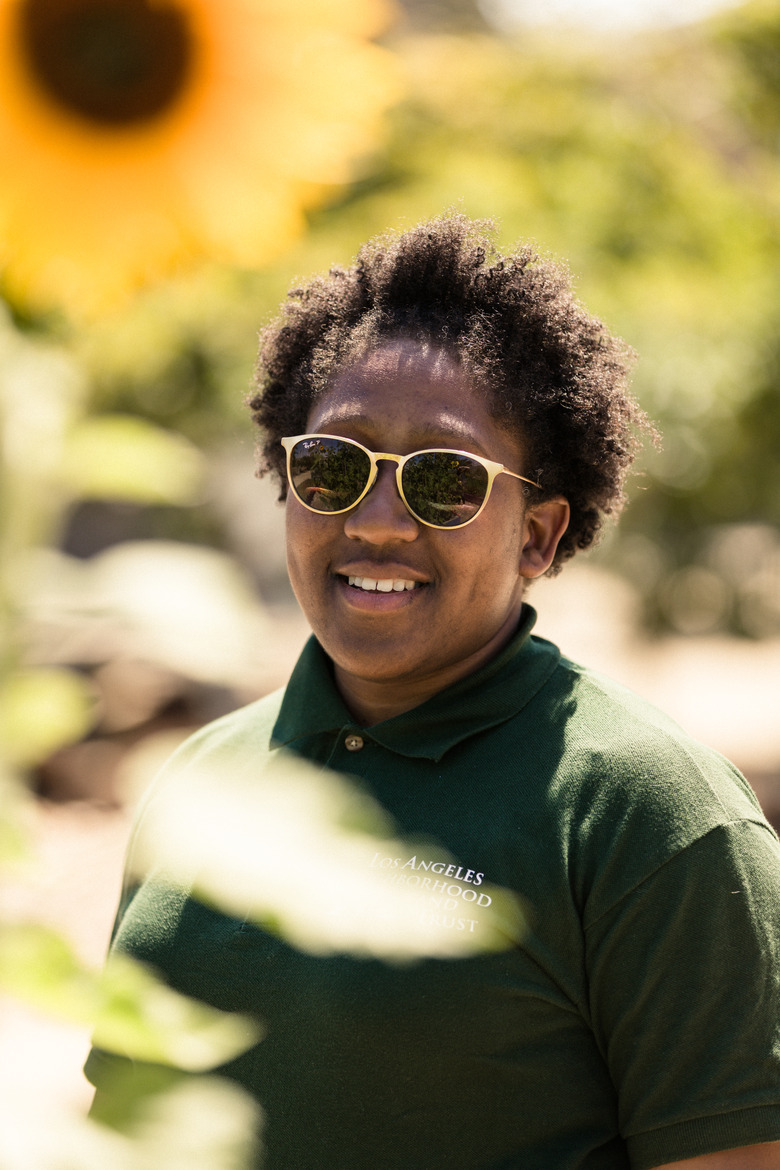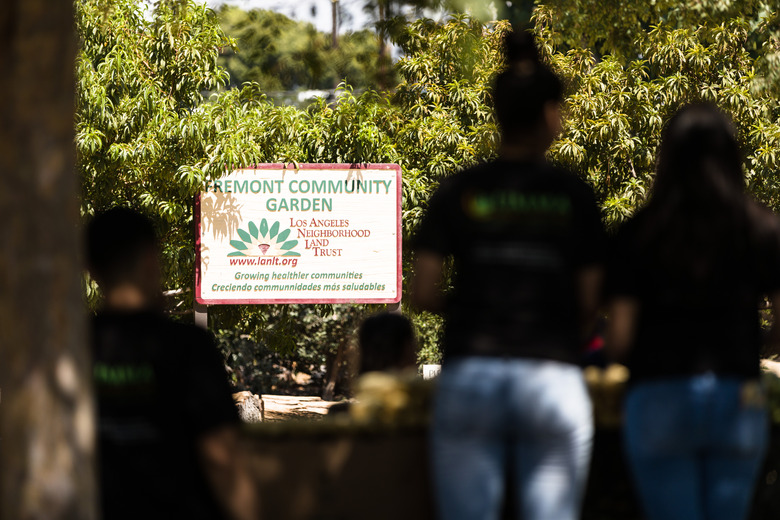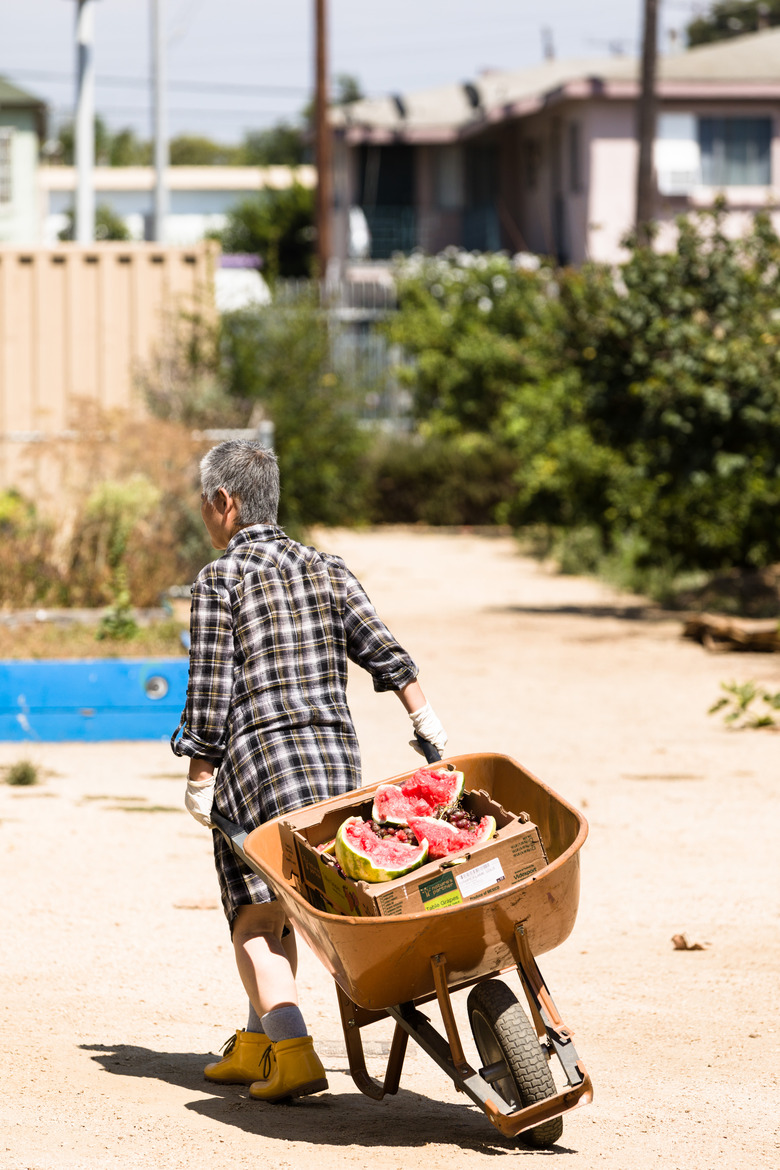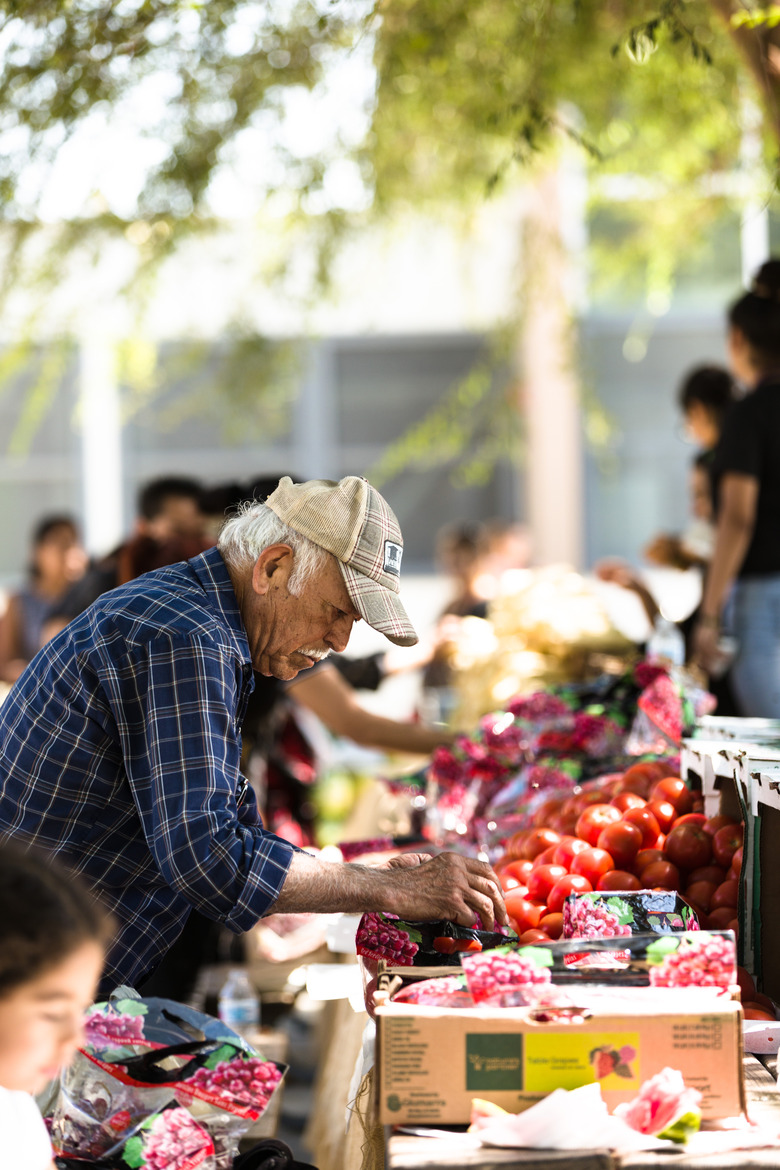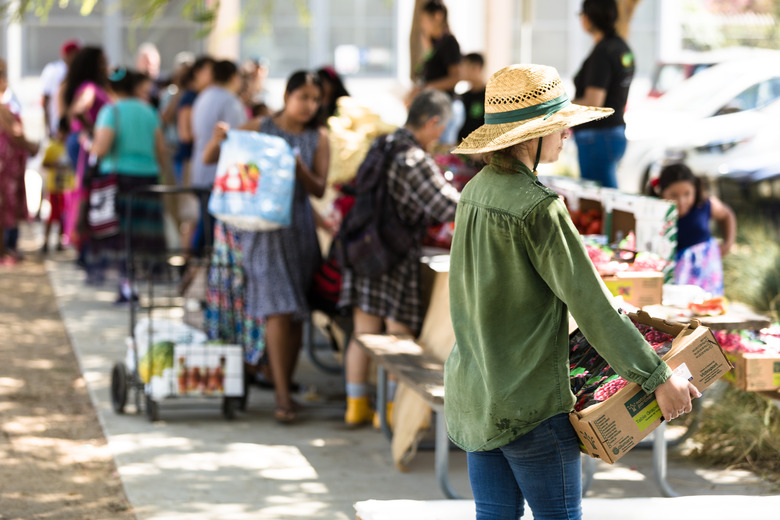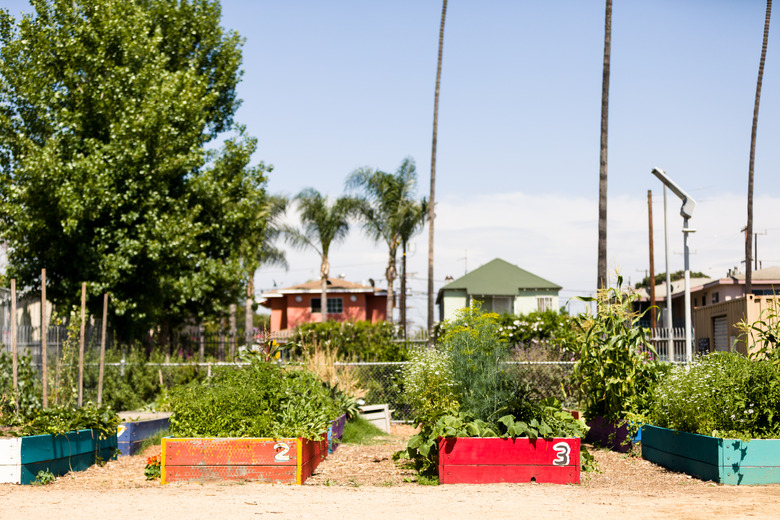Architect Of Impact: Tamika Butler
A high school in South Central Los Angeles isn't where you'd expect to find utopia. As I made my way to interview Tamika Butler, the Executive Director of the Los Angeles Neighborhood Land Trust, I traversed endless asphalt, treeless sidewalks, and fast food chains, all in an area as flat and unchanging as an airport runway.
But as I turned into the driveway for the Fremont Wellness Center and Community Garden, I found myself in a fruit orchard filled with dancing Monarch butterflies. Kids chatted on benches in a holistic garden as they trailed their fingers in rosemary, phones surprisingly down. A greenhouse gleamed as proudly as the Louvre Pyramid near a clinic that runs free health and mental services. This is a place where the notoriously rarefied concept of "wellness" takes concrete and democratized form, where star signs and Moon Juice are replaced by an inclusive and decidedly Earth-bound vision.
This vision — the garden, the orchard, the greenhouse — is all thanks to the Los Angeles Neighborhood Land Trust, a nonprofit founded in 2002 to address the park inequities in Los Angeles by bringing green space to communities of color. The statistics are troubling: When it comes to the number of people living within half a mile of a park, Los Angeles ranks 74th out of the ninety-eight largest cities in the U.S., and low-income areas have it the worst. Tackling this inequity is a huge job, which means the Neighborhood Land Trust designs, builds and manages over 27 urban parks and community gardens in L.A. — and that number is growing.
The Fremont Wellness Center located south of downtown Los Angeles is one of the 27 projects in the greater Los Angeles area that the Neighborhood Land Trust has designed, built, and now manages for the local community.
Butler is the woman at the helm — one with endless charisma who favors bowties and blunt talk and uses her job to combat the systemic racism that underlies L.A.'s urban planning. Here, she tells Hunker why parks in underserved communities of color are important, why green space is as crucial as housing and gun law reform, and how to stop pretending to be an activist and effect real change.
So we're at the Fremont Wellness Center, and I'm in awe. Tell me what we're looking at.
The reason this is called the Wellness Center is because the idea was to create a holistic spot where folks could feel welcome and vibrant, and for their total wellness. The clinic is run by UMMA, which is a Muslim-faith based organization, and anybody can use it for health and mental health services. The greenhouse is the only one like it permanently installed on a high school campus — I think nobody expected it to be in South Central. That's where we do classes for high school students. We have a medicinal garden where folks have planted things like aloe. We have an orchard, garden beds, composts, a chicken coop, and a community garden, where anybody in the community can have a plot to do their own planting and harvesting.
This is all on the Fremont Senior High School campus — what was this area before the L.A. Neighborhood Land Trust got involved?
It used to be the old "young farmer's club" essentially. After that went away, it was open space next to the football field. Students used to come here, make out, get in trouble.
That's what I would have done in high school.** **
[Laughs] Now this space is used for classes during the day, and after school we do the garden apprenticeship program, which we call GAP. When we have our sessions going, the kids are tending to the soil and gardening. But while we're teaching gardening we also teach them about social justice, racial justice, and healthy eating.
Explain to me how gardening and social justice are linked.
One young woman who did the GAP program — she was the valedictorian of her class — we asked her what she was going to major in and she said, "I've really just gotten into science, so I'm going to start with biology, but there are so many different areas of science I could do." The GAP program was her way in. We're constantly trying to get young people engaged with STEM, but we don't just have to use coding to get young folks engaged and be creative. The ideas you learn here are translatable into very practical design careers, but also corporate careers, science, math — all of these different things.
How do you keep the students engaged?
I hear a lot from the kids who say, "I just like to get out here and get away." This street is crazy right? Now, in a low-income community of color, it's hard to get students to do stuff after school because they have to work. So with GAP we pay a stipend so students are actually getting paid for their time. So we're not taking hours away when they could be supporting their family. It's in flux right now, but I just signed end-of-the-year checks for students that were maybe a couple thousand each.
How do the benefits extend beyond the students?
One of our students, her parents have a plot here. Her mom has been diagnosed with an illness so she had to change her eating habits, and after she got this plot her daughter said, "We're eating Kale! I didn't know what that was. My mom makes a green smoothie now!"
I think some people might see this and say, "This is beautiful, but why is a garden so important for South Central? Could the resources be better spent elsewhere?"
The way I talk about it in an urban planning and design way, if we're being honest, these communities haven't just been neglected; they've been intentionally planned against. These are the communities where it's okay to have zoning for oil drilling. Where it's okay to be heavily industrial. Where there isn't a lot of access to fresh fruit. Where the streets are wider, the traffic is faster, and you're not going to find bike lanes or sidewalks in good repair. These are the communities where all the planning crashes together and people don't realize how important parks are to wellness, mental health, physical health, grades, reducing violence, and life expectancy. Parks are still viewed as, "It would be nice to have." Gardening is viewed as a hobby. That's something we have to fight against. Just because a person is low income or a person of color, they shouldn't have to choose between affordable housing and safe streets and green space and fresh fruit. Just like someone who lives in Santa Monica or Pasadena, they should be able to have relatively quick access to all those things.
"These communities haven't just been neglected; they've been intentionally planned against." – Tamika Butler
How did these park inequities happen?
When Eric Garcetti was a fairly new council member, some of his friends got together and wanted to study why there are park disparities. So they put together this study, A Walk to the Park, and they found that years ago, there was this unwritten policy in the city of L.A. that if there weren't five acres of land, the department of recreation wouldn't build a park. The rationale was that their budget is getting cut every year — the show Parks and Recreation is actually pretty accurate. And so their idea was, we need to get the most bang for our buck with a substantial piece of land. What ended up happening in communities like this is folks are really packed in. It's high density. You're not going to find a lot of land. So a policy that, if you think of it in the most kindly way was pretty benign, actually had a discriminatory impact. This resulted in a lot of communities of color not having access to green space. As you noticed on the drive over here, this community is all concrete. So people say, "We're going to do an event here; where are we going to get food from?" It's like, "Well, let me list the ten fast food places." "Where's the grocery store?" "Well, let me tell you where to go to the grocery store before you actually get to this community."
Which is why you have a free farmer's market twice a month.
The students run it completely with a non-profit called Food Forward that collects food at the end of farmer's markets around the city. So right in front of the orchard, everyone in the community comes and they get numbers, and when we call their number they can get the fruit and vegetables they want for free.
What was family life like for you when you were growing up?
My dad had 15 brothers and sisters who grew up in the projects in Omaha, Nebraska. My mom was a military kid born in the South, and she speaks in great detail about being in South Carolina near some of the most beautiful beaches but never being able to go because of segregation. They both ended up in Omaha, and my dad had a number of jobs, some legal, some illegal. When they found out my mom was pregnant again with me, my dad said, I gotta join the military. So I was born in New Mexico. Then we moved to Greece, Las Vegas, Okinawa, and back to Omaha. My parents ultimately both went back to college and got their degrees and their master's degrees. My dad did intelligence work — which is really all I know — and my mom worked at a military equivalent of a boys and girls club.
And you ended up going to Stanford Law.
I was getting good grades so I was definitely one of those kids whose parents said you have to be a doctor or lawyer. I went to law school because it was shorter and frankly seemed easier than medical school — with less blood.
I was told recently by another woman we featured in this series, Tiffany Brown, that kids of color are often pointed toward social work, nursing, medical school, et cetera by their parents.
For many young kids of color who are blessed to be really smart, you get on this hamster wheel and it's hard to get off because you have all these expectations. You get into Stanford, or you get into Harvard, and you have to go. You don't have time to be like, Is this what I really want to do?
So was it?
No. While I was working at Legal Aid Society-Employment Law Center, I had a client who was a black, gay, Brazilian immigrant who was a priest. He left the priesthood and got a job at a manufacturing plant where they called him a fag, an immigrant, spray-painted his locker, keyed his car. I had to write a memo on whether we should take his case and my supervisor said, This is really great. Just add one section about this issue. And I was like, "I don't want to do this!" And I thought, If I don't want to do this work for this guy, then I don't want to do this job. Because he was the most likable client I was ever gonna get. Then I realized, _I don't have any other marketable skills. I have a law degree. Before that I got a sociology degree..._So what else do lawyers do? They get involved in policy and advocacy.
So let's talk about representation and inclusion. You're a black lesbian running the Neighborhood Land Trust, and that seems crucial if we want to implement real change when it comes to design and urban planning.
Frankly, the folks who are developing our communities don't look like me. And I think that's a race and class issue, but also a gender issue. When I was at the Los Angeles County Bike Coalition, I used to talk all the time about how, if you're an able-bodied, cisgender white guy and you're walking down the sidewalk or riding your bike you might think I feel safe in a way that a mom wouldn't, or a woman walking alone at night wouldn't. He's not thinking about streetlights. So I think pushing young folks of color, young women, queer folks — people who have a different experience — into design and planning is important. I want to encourage more of those folks to say, "Green space isn't just a luxury thing white folks do. It's something we're excluded from and we're being planned against because we're not even considered." But it's sometimes hard to get folks to see that.
It's that "give her a rape whistle" mentality, as opposed to adding lighting and landscape design to make a space safe. I guess a whistle is cheaper.
I think it's the same for folks with disability. How would design be different if people with disabilities were included in design? And it's not just on us — we have to be proactively reached out to. We need exposure to know that this maters. I think we're pretty lucky in California, at least, because parks like this are still being built. We're in a state that's pretty protective of the environment and so with a lot of the changes that have been happening on the federal level [laughs] it hasn't necessarily impacted our budget — yet. We haven't had the same kinds of scares as folks in the immigration rights movement, or LGBT, or education, or you know, name it.
I was watching one of your interviews and you were breaking down the difference between actors — people who act like they care about racial inequalities — and allies and accomplices...
I talk about that a lot. For me, being in a place like California is hard. My wife is Canadian and I feel the same way about Canada. Everybody is trying so hard to be the good liberal, but at least in Nebraska, I know exactly where everybody stands. My neighbors may be perfectly friendly but they have their Trump/Pence sign in the yard. So when I talk about actors, I'm thinking of places like California, where everybody knows what to say, they know what they should do, they're very good at playing the part, but that doesn't mean they're actually doing anything. They're like, yes, black lives do matter. Climate change is real. They actually believe those things but they're just going through the motions.
So what are allies and accomplices?
Allies are a step further and I hope a lot of people are getting there on their journey. These are folks who are like, I can actually do more than play the part. An ally is not just a noun; it has to be a verb. You have to do something. For example, this past Martin Luther King Day, the beds here needed to be painted, and some people were like, this isn't my community but I'll come down and help. Anyone who has tools, resources, or knowledge can help. The last one is an accomplice. Being a lawyer, I describe an accomplice as, if we're going to get into trouble, if we're going down, you're willing to risk something, too. I don't mean prison time. As an accomplice, that might mean that your community could also use a park or garden, and the closest park is a fifteen-minute walk away, but the kids in this community have to get on a bus to go to a park. So when you have a chance to advocate for something you're willing to say, "Yeah we need a park but we can wait. These folks need it more."
1. Credits
Words: Deanna Kizis
Images: Stephen Paul
Allies and accomplices can learn more at the Los Angeles Neighborhood Land Trust website. http://www.lanlt.org.
Architects of Impact profiles remarkable people who use design, architecture, and urban planning to drive positive social and environmental change. To read more, check out our first article about Architect Tiffany Brown.
